Korean Pork Bulgogi is a quick and easy to make marinated pork dinner. The tender slices of pork are packed with sweet, savory and umami flavors. Serve over rice with kimchi and cucumber for a quick dinner that tastes like it took hours.
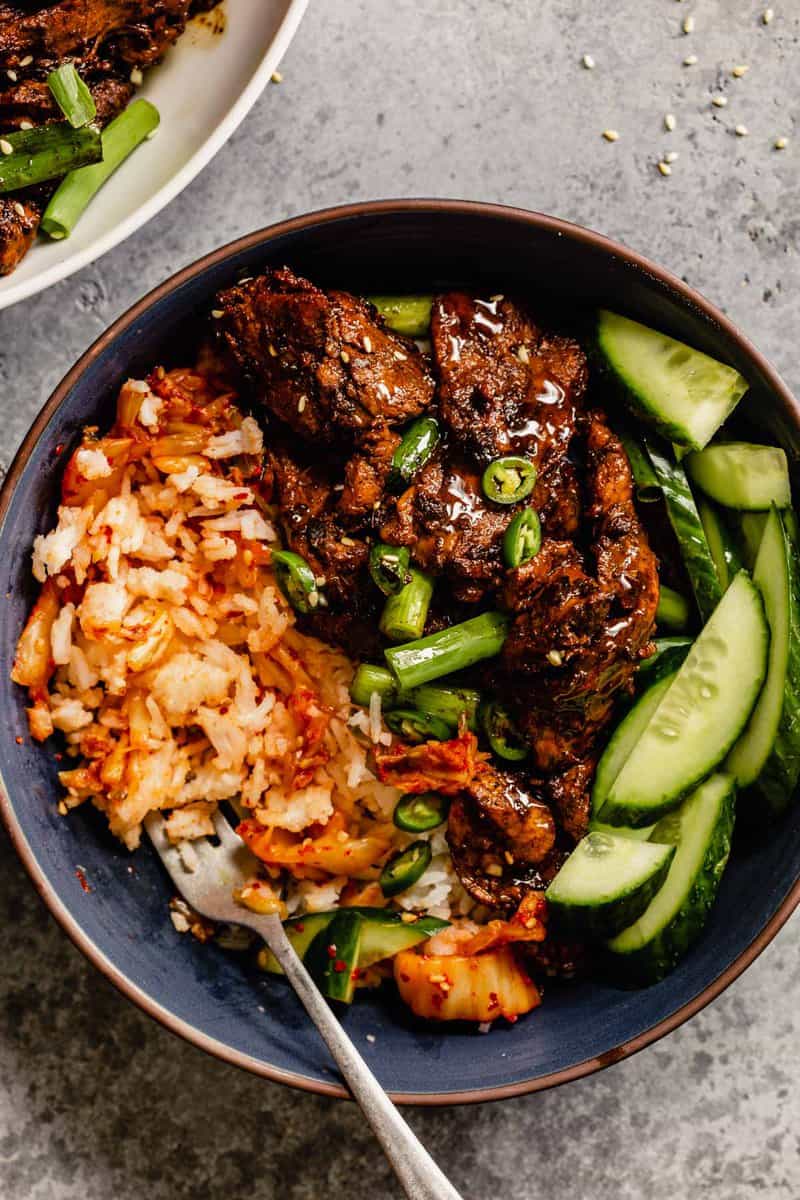
Table of contents
Why I Love This Recipe for Pork Bulgogi
Pork bulgogi is one of the quickest and easiest pork dishes you can make. And since it’s marinated you can prep it ahead of time! Which means most of the work is done before the dinner hour rolls around. The thin slices of pork cook up in just minutes, which means dinner can be on the table in no time.
And lastly, I use pork tenderloin here instead of shoulder. It’s leaner, easier to prepare, and still deliciously tender.
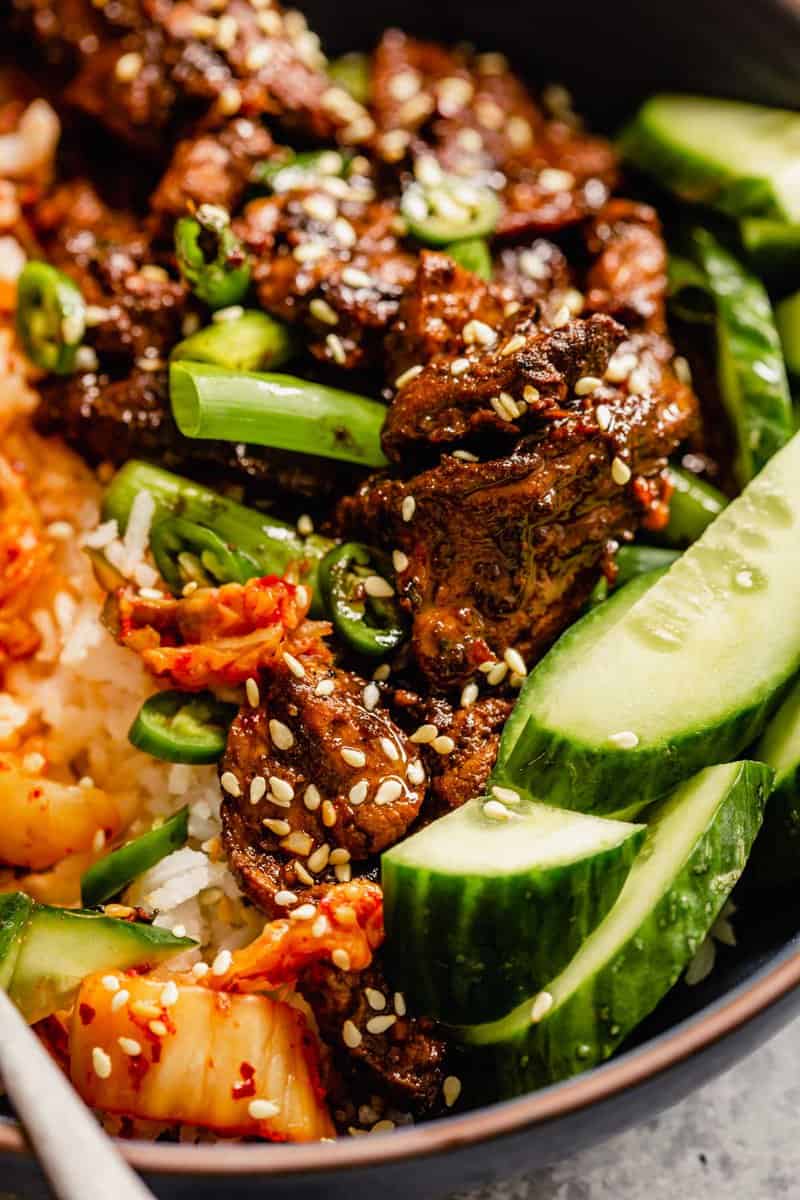
What is Pork Bulgogi
Traditional Korean Bulgogi, aka Korean bbq, translates as “fire meat,” is made with tender cuts of beef. Just like any cultural staple, variations of bulgogi are abound, including pork and chicken versions. The process of making bulgogi varies widely from region to region. This recipe follows the general process and idea, but does differ from traditional recipes in some ways.
Bulgogi starts with very thin slices of meat which get marinated in a sweet, savory and umami mixture. The meat is then cooked quickly over high heat and served with rice and perilla leaves. For my version, I use pork tenderloin which is less traditional than the usual pork shoulder. And instead of serving this Korean dish in perilla leaves, I opt for rice, kimchi, and cucumbers.
Learn more about the history and evolution of Bulgogi and Korean cuisine. And if you’re looking for more traditional Korean recipes, be sure to check out My Korean Kitchen. Sue has a great Spicy Pork Belly Stir Fry!
Test Kitchen Tip
- Pork bulgogi is sometimes also called Spicy Pork Bulgogi, Dwaeji Bulgogi, Gochujang Bulgogi or Jeyuk Bokkeum. It’s spicer than beef bulgogi, so if you love spice I recommend adding an additional 1–2 tablespoons of gochujang. A heaping teaspoon of red pepper flakes will also work.
Bulgogi Marinade
The marinade for bulgogi varies, but traditionally it consists of onion, ginger, sesame oil, sesame seeds, soy sauce, garlic, pepper, sugar and rice wine (mirin). Oftentimes Asian pear or pear juice is added as well because it contains a tenderizing enzyme.
When making bulgogi I skip the pear—it’s disputed whether or not it actually tenderizes. Feel free to ½ cup of grated Asian pear to the marinade if you’d like. I also add gochujang, which is not traditional in beef bulgogi but it is in pork bulgogi.
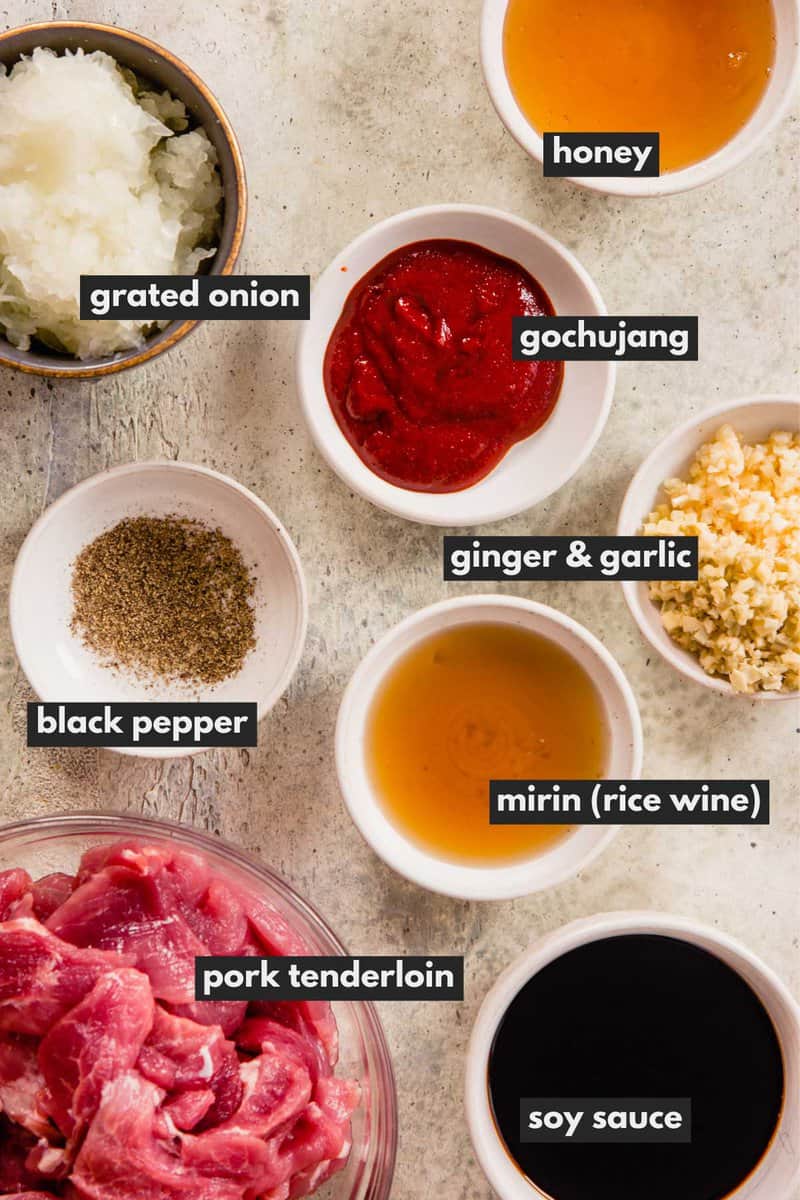
Ingredients in This Recipe
- low-sodium soy sauce (or tamari if gluten-free)
- grated white or yellow onion
- honey
- gochujang, or gluten-free gochujang if needed
- Ginger
- garlic
- mirin or rice wine
- cracked black pepper
- pork tenderloin
- Scallions (also called green onions)
How to Cook Pork Bulgogi on the Stove Top
Heat a cast-iron skillet over medium-high for 5 minutes. Brush the skillet with oil and, working in batches, arrange the pork in a single layer in the pan.
Avoid overcrowding as that will steam the meat instead of searing it. Cook the pork until charred and just cooked through, 1½–2 minutes per side; transfer to a serving platter. Repeat the cooking process with the remaining slices of pork.
How to Cook Pork Bulgogi on the Grill
Prepare a charcoal or gas grill for high heat. Brush grill grate clean; brush grate with oil to coat. Working in batches if needed, arrange sliced pork on the grate and grill just until cooked through and browned, about 1½ minutes per side.
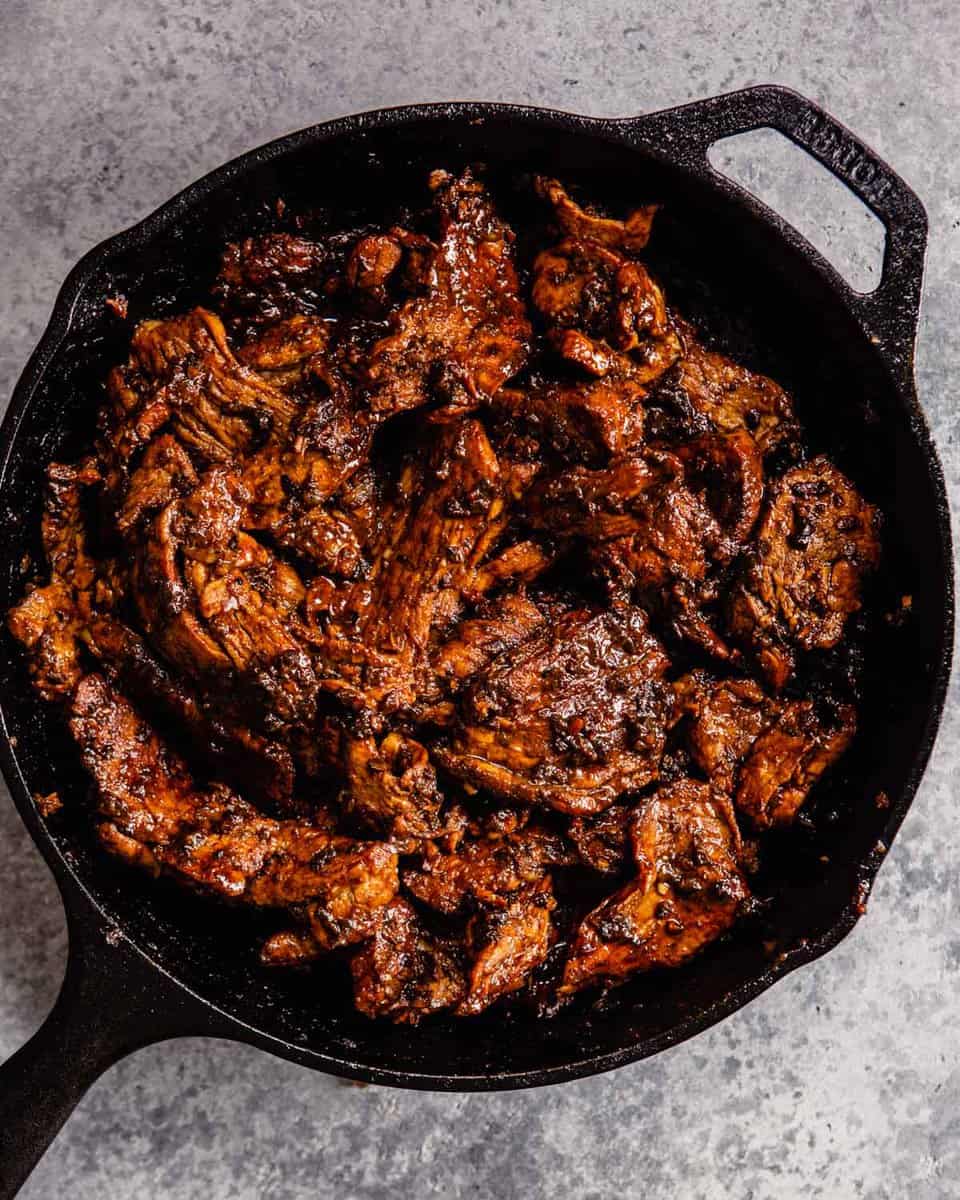
FAQ About This Recipe
Sure! To keep this pork bulgogi, you can use pork shoulder in place of the pork tenderloin. If you’re looking for a different meat altogether you can try my Beef Bulgogi, Ground Beef Bulgogi or Chicken Bulgogi.
Fresh ginger and garlic really make a difference in this dish. But if it’s the one thing keeping you from making this, go ahead and use dried ginger (1 tablespoon) and garlic powder (1 ½ teaspoons).
The pork can marinate in the refrigerator for up to 24 hours. I wouldn’t marinate longer than 24 hours. To prep pork bulgogi farther in advance, you can freeze the pork and marinade together until ready to use. Let it thaw in the refrigerator until ready to use—it’ll likely take 2 days to thaw in the fridge.
Korean-Style Pork Bulgogi
Description
Ingredients
- ½ cup low-sodium soy sauce or tamari if gluten-free*
- ½ yellow onion, grated
- ¼ cup honey, brown sugar or apricot jam
- 2 tablespoons gochujang, gluten free if needed
- 2 tablespoons chopped fresh ginger
- 2 tablespoons mirin or rice wine, optional *
- 1 tablespoon chopped garlic
- ¼ teaspoon cracked black pepper
- 2 pounds pork tenderloin, cut into ⅛–¼-inch thick slices
- 2 teaspoons avocado or grapeseed oil
- 1 bunch scallions, cut into 1-inch pieces
Serve with:
- Toasted sesame oil
- Serrano chiles, thinly sliced
- Toasted sesame seeds
- Cooked rice for serving
- Kimchi
- Thinly sliced English cucumber
Instructions
- Whisk together soy sauce, onion, honey, gochujang, ginger, mirin, garlic and black pepper in a large bowl. Add pork and toss to coat; cover and refrigerate at least 4 hours, or up to overnight.
Cook on the Stove Top
- Heat a cast-iron skillet over medium-high for 5 minutes. Brush grates of pan with avocado or grapeseed oil. Using tongs, transfer pork slices, letting excess marinade drip off, to skillet in a single layer, making sure not to overcrowd. Cook pork until charred and just cooked through, about 1–1½ minutes per side; transfer to a serving platter.
- Repeat cooking process in batches with remaining pork.
Cook on the Grill
- Prepare a charcoal or gas grill for high heat. Brush grill grate clean; brush grate with oil to coat. Working in batches if needed, making sure to not over crowd, arrange sliced pork on the grate and grill just until cooked through and browned, about 1½ minutes per side.
- Reduce heat to medium. Strain the remaining marinade into now empty skillet and add any juices released from cooked pork. Bring to a simmer, scraping up browned bits from the pan, adn cook until thickened and silky, 3–4 minutes. Off heat, add pork back to the skillet and stir to coat.
- Transfer pork back to skillet and top with scallions, serranos, sesame seeds and a drizzle of toasted sesame oil.
- Serve with cooked rice, kimchi, and sliced cucumber.
Notes
Nutrition
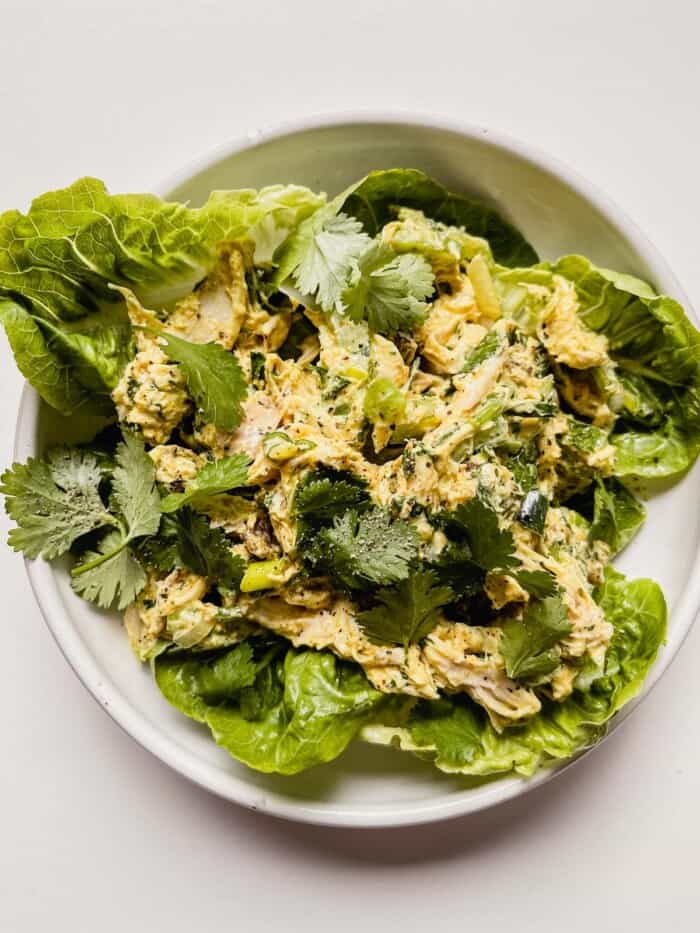
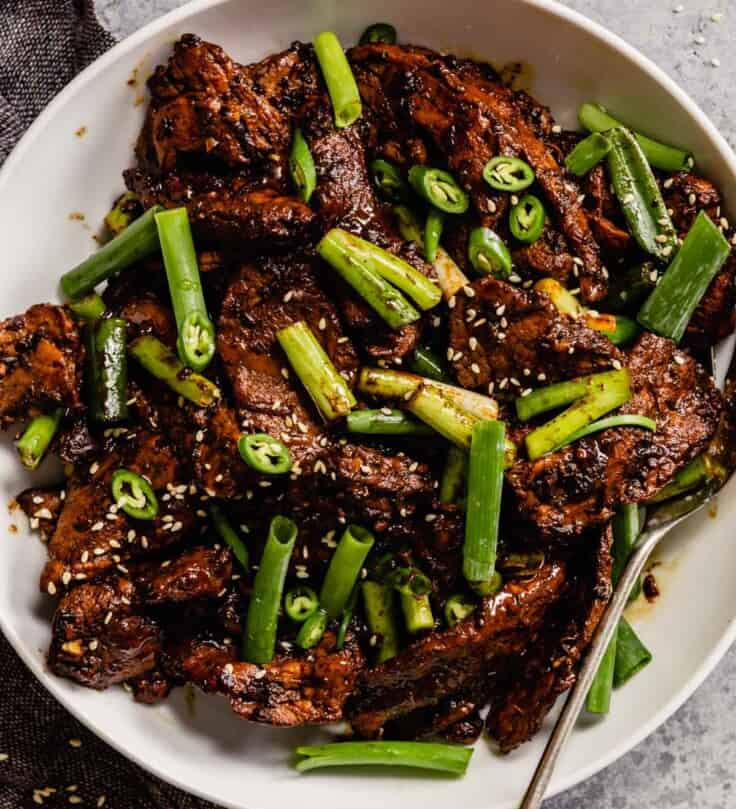
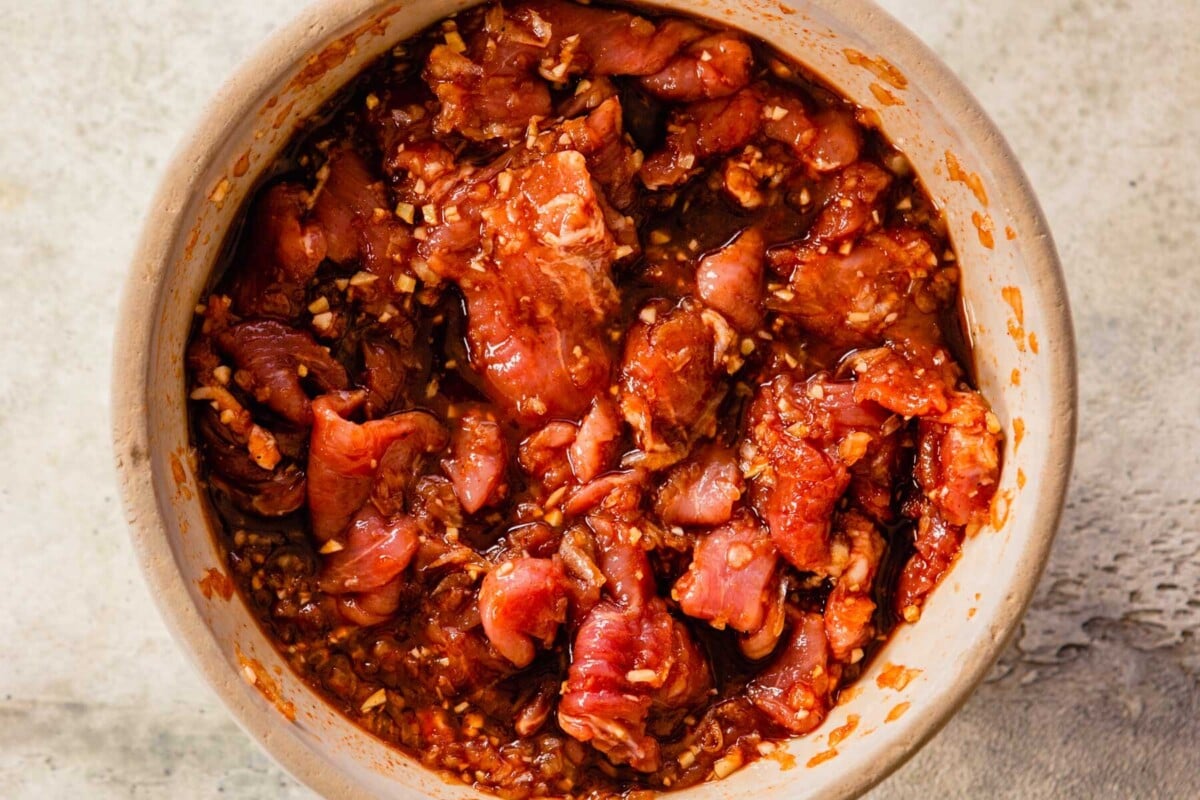
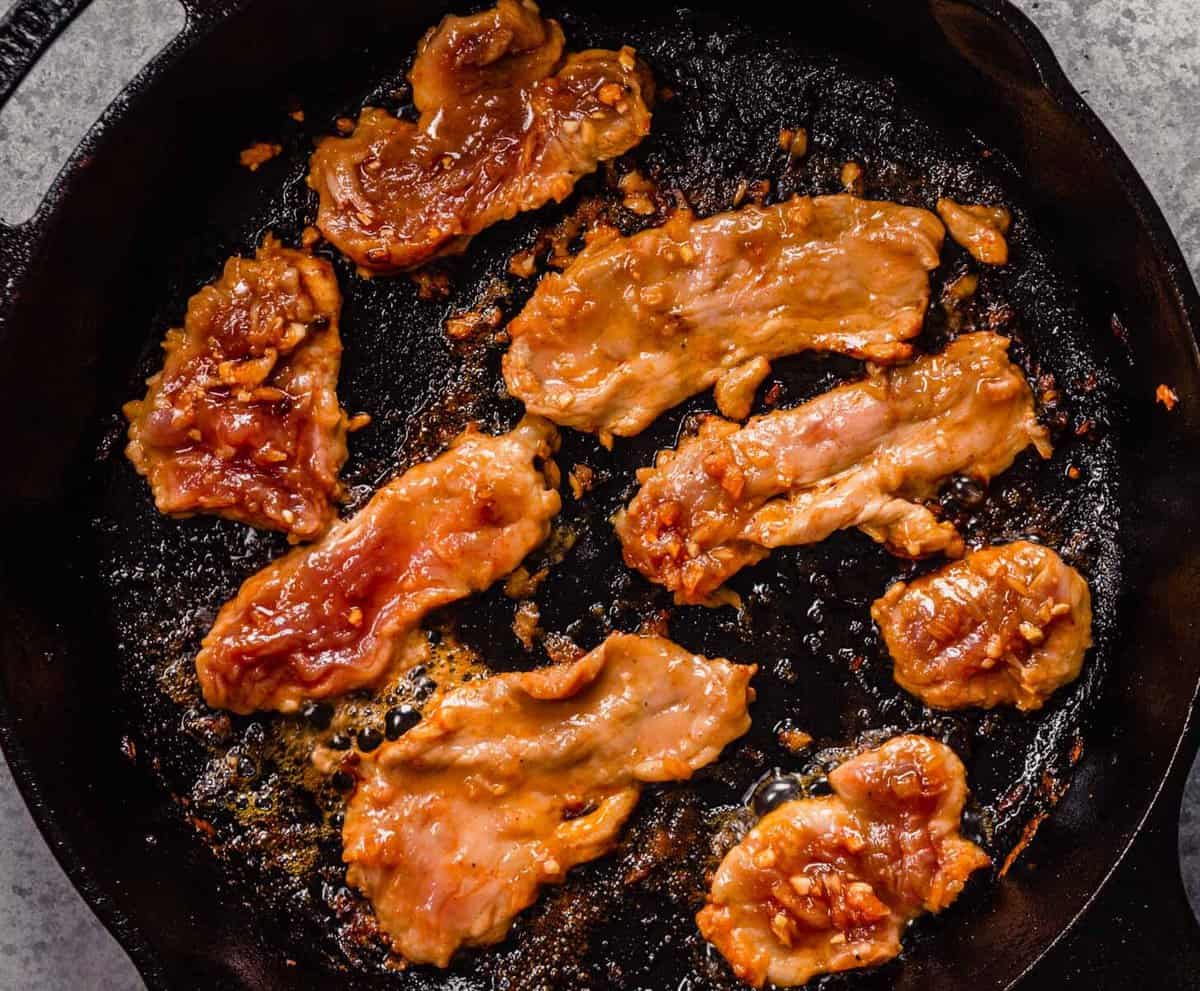
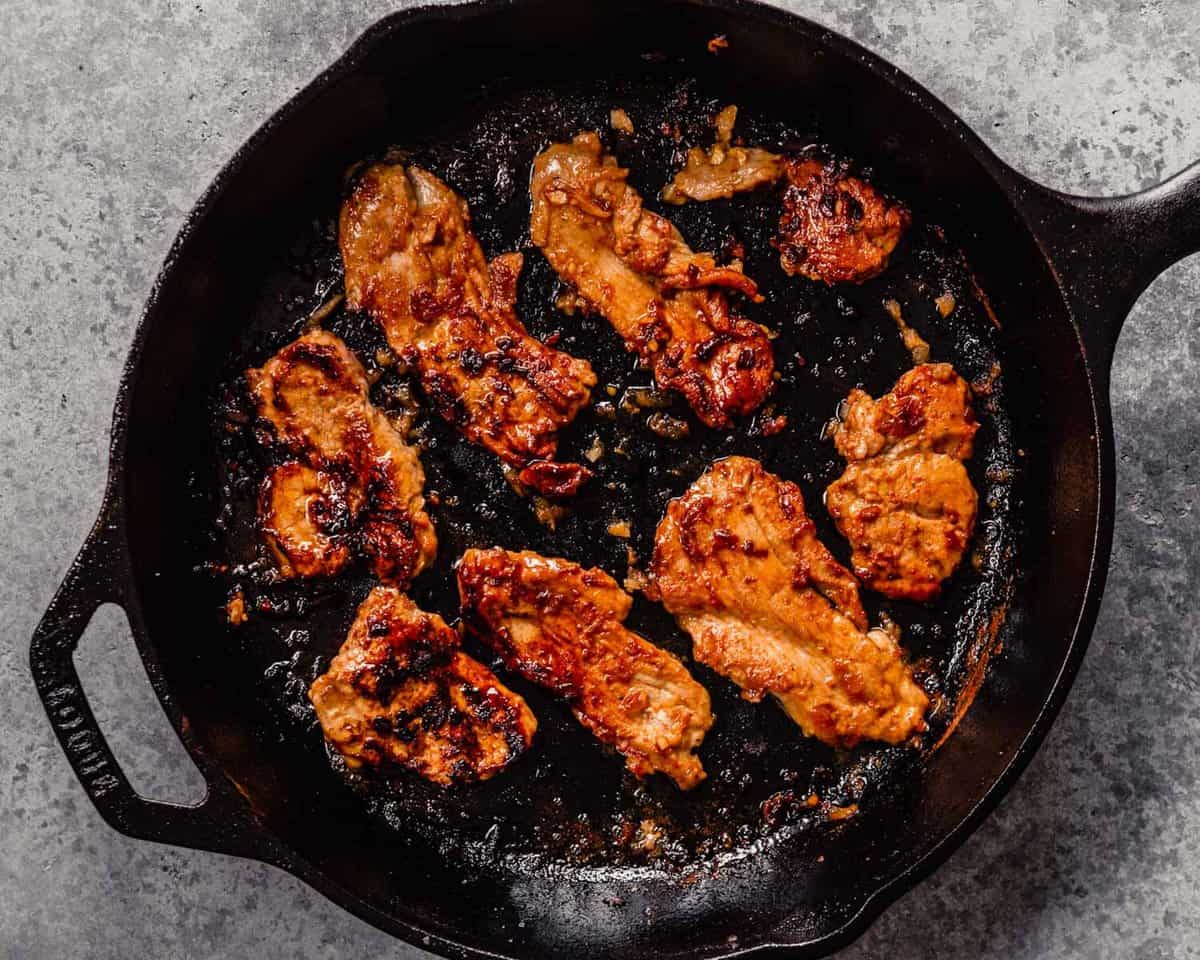
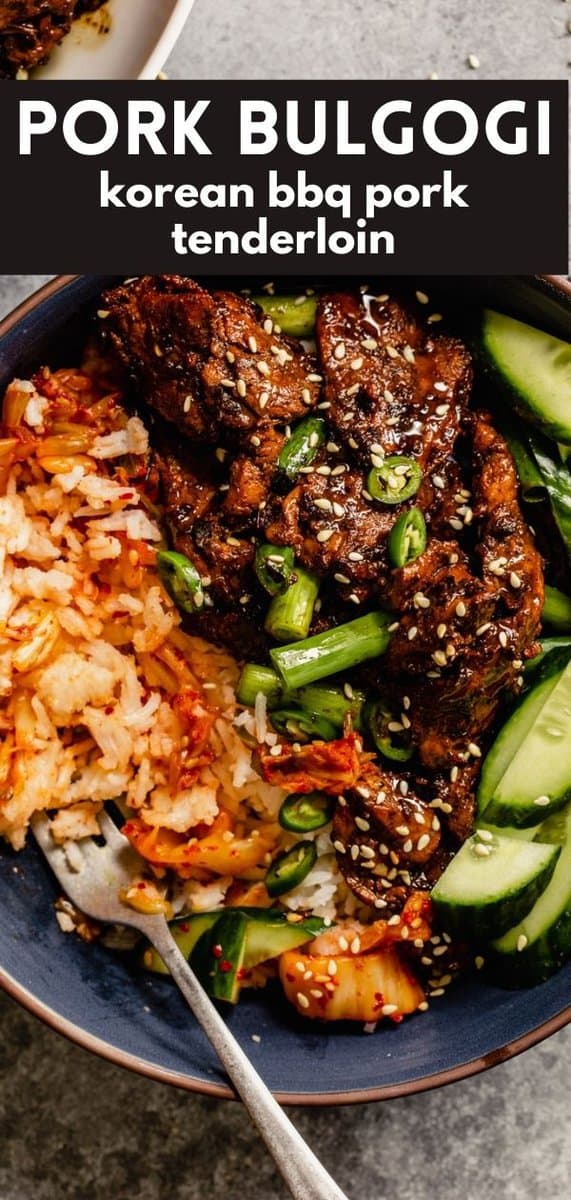
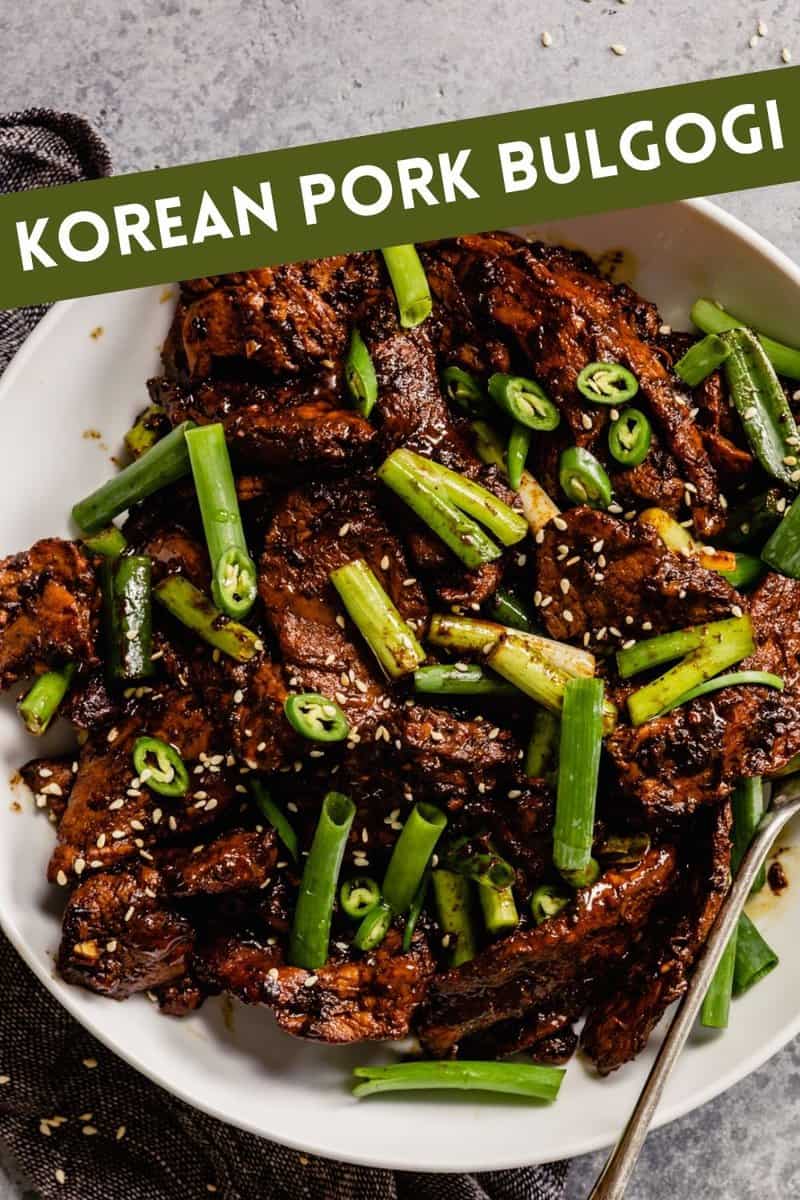
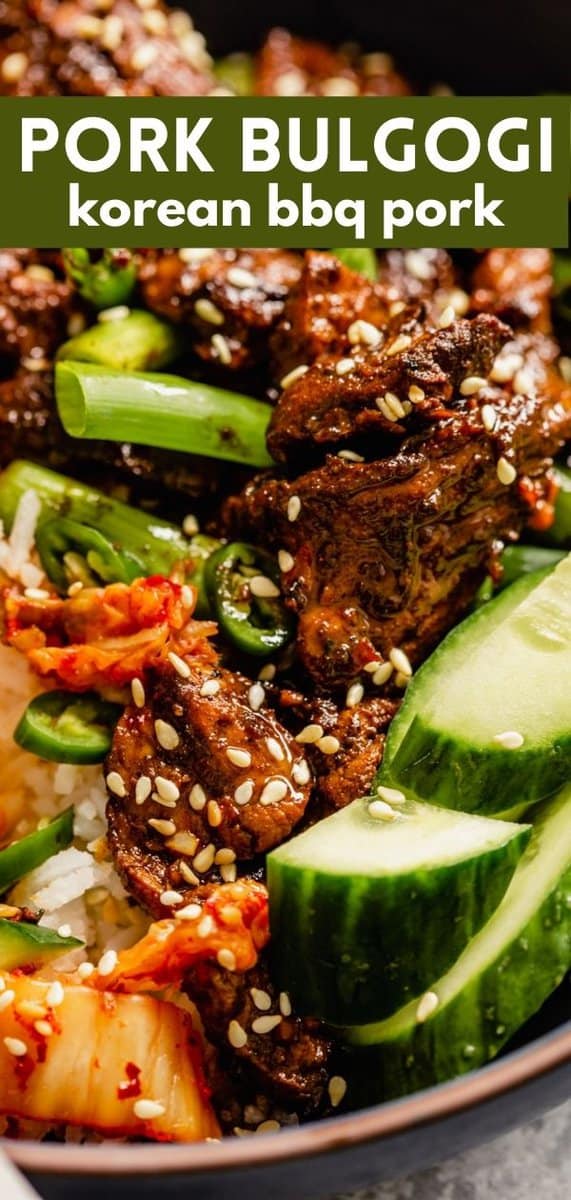
This was fantastic! Even my pickiest eater was out of her room investigating the wonderful smells of it cooking, and then had two helpings. Thank you!
I let it marinate 24 hours. The family loved it. I simmered the marinade to thicken it and put it over the rice.